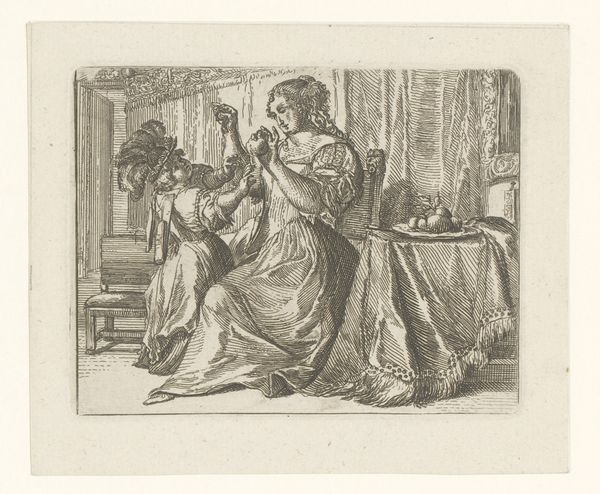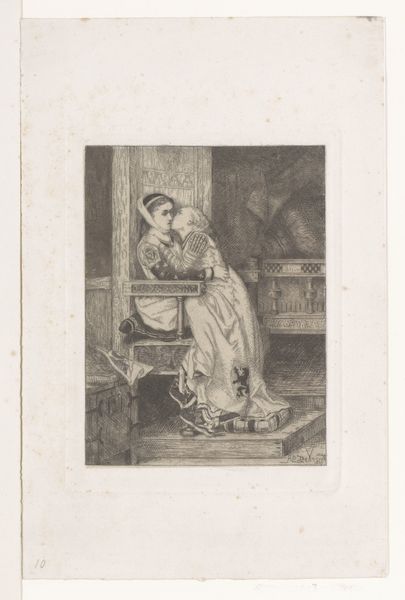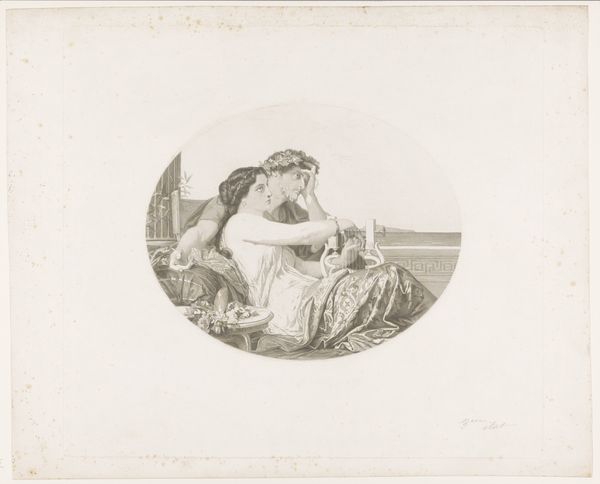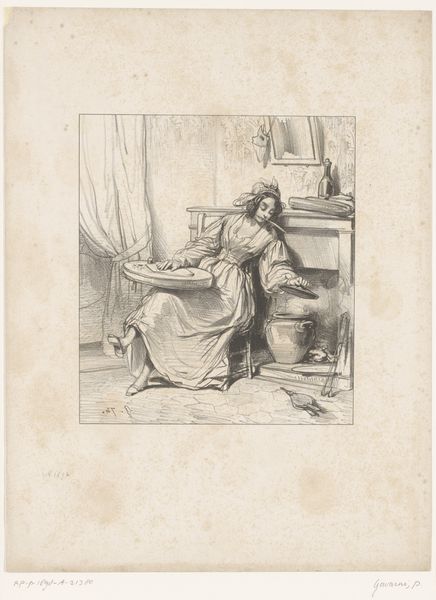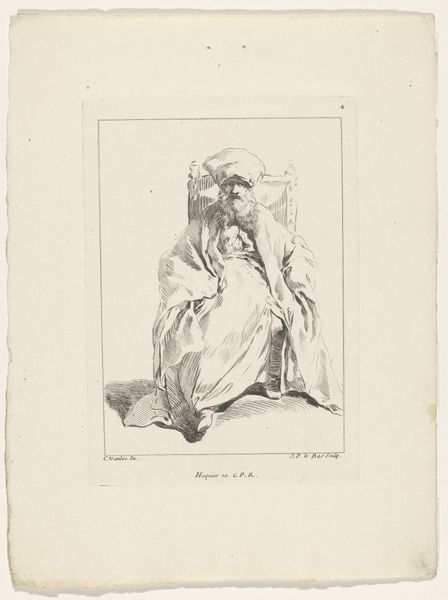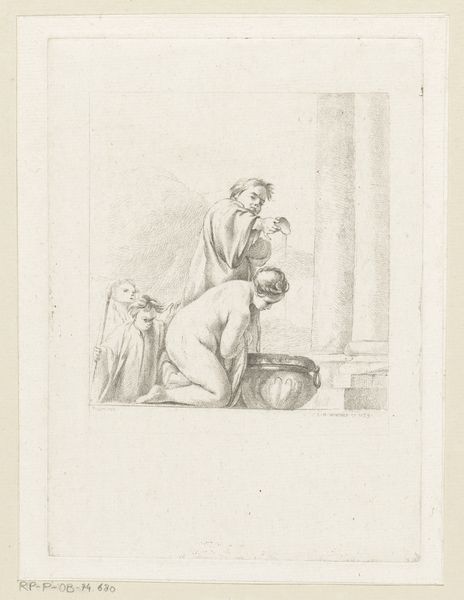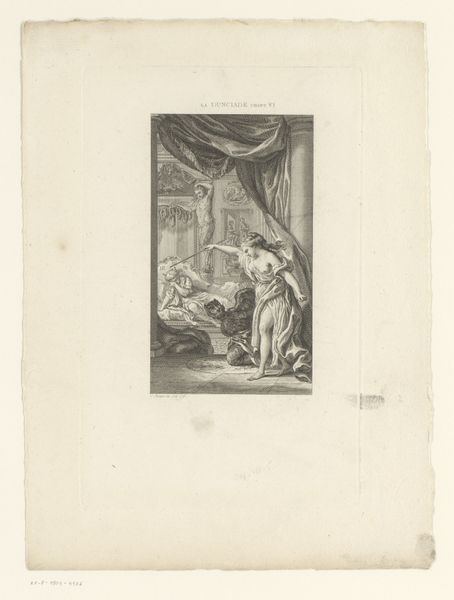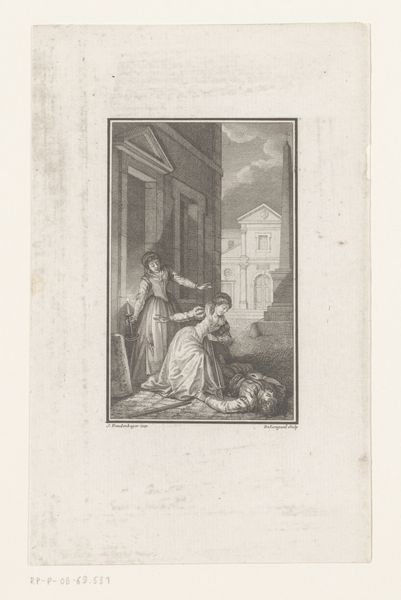
Dimensions: height 221 mm, width 165 mm
Copyright: Rijks Museum: Open Domain
Curator: Welcome. Before us is Angelica Kauffmann's pen and ink drawing, "Vrouw die haar haren vlecht," created in 1765, currently residing here at the Rijksmuseum. Editor: It's striking, this piece. The figure’s absorption in braiding her hair, rendered in such delicate lines, is almost mesmerizing. You can almost feel the weight and texture of her hair in your own hands. Curator: Indeed. Kauffmann, though working within the framework of Neoclassicism, imbues her work with a Romantic sensibility, focusing here on intimate moments, perhaps inspired by engravings of classical statues or the theater and self-fashioning during this period. The fact she created this print herself also underlines a growing trend for female artists taking charge of reproduction. Editor: That’s interesting. The lines created with pen work overtime here, I think. Note how they construct the drape of the dress as well as the planes and curves of the body, the textures of the cushioned furniture, all pointing towards how important these domestic objects were at that moment. You can see Kauffmann paying close attention to detail, yet letting other areas fade into plain outline. It emphasizes the figure’s place in the surrounding architectural structures. Curator: Precisely. And the classical backdrop, including that partial column, elevates a mundane scene. It contributes to a sense of timeless beauty that was fashionable at the time, in tension with its being part of a much wider visual market which relied on artists also having an eye to prints as reproductive vehicles. Editor: What's interesting here is how Kauffmann herself engraved it. What agency, literally in her own hands! And I appreciate the contrast between the smooth, idealized skin and the textured surfaces around her, especially that woven basket. It draws attention to labor, domestic work… Curator: It’s a wonderful example of Kauffmann navigating the expectations placed upon women artists while subtly asserting her own voice through her control over the process of printmaking. Her mastery is indisputable, as is her sharp commercial instincts. Editor: Yes. To consider the tactile elements further and its context definitely invites us to look at this artwork not only as aesthetic experience but also a production object. Curator: A powerful reminder of the many roles art, and the woman artist, can fulfill. Editor: An evocative and enduring piece, still resonant after all this time, don't you think?
Comments
No comments
Be the first to comment and join the conversation on the ultimate creative platform.
